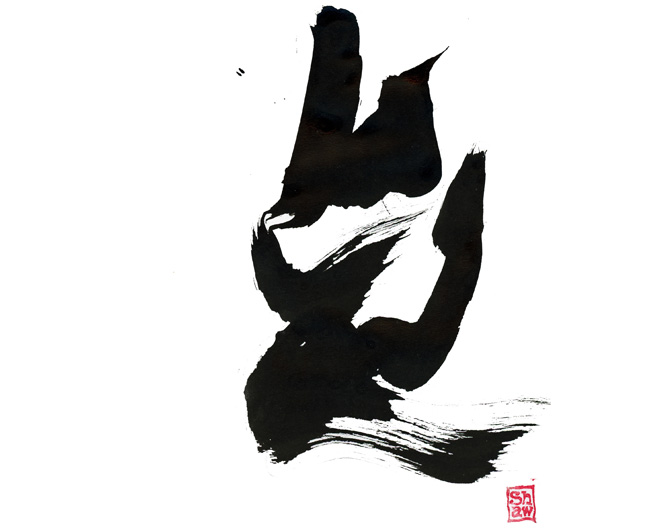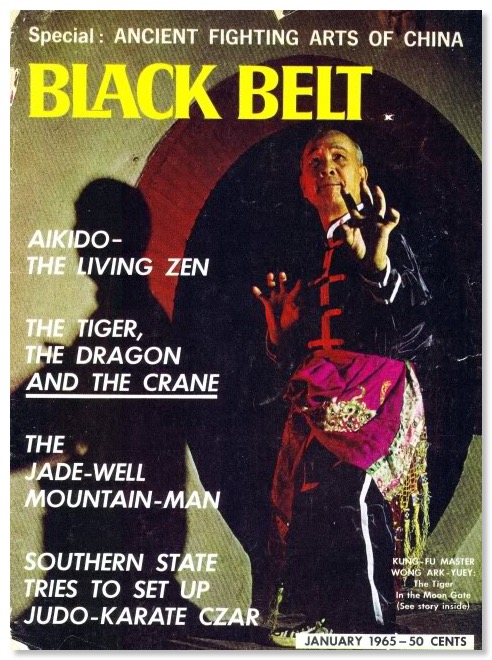Ark Yuey Wong To Fight or Not to Fight



Ark Yuey Wong
To Fight or Not to Fight?
By Scott Shaw
I find it very interesting that in my lifetime some of the very influential figures of the modern martial arts have come to be all but forgotten. An ideal example of this is Ark Yuey Wong.
Ark Yuey Wong is sometimes referred to as the Father of American Kung Fu. This is a well deserved title. He had a studio in L.A.’s Chinatown at 302 Ord Street known as, Wah Que Kung Fu Studio, and was one of the first Kung Fu practitioners to actually teach the art to Westerners. Born in Canton, (Guangzhou), China, he spent most of his life in the U.S.
I first came into contact with him in the early 1970s. A couple of my friends were his students.
The early 1970s was a time when Kung Fu first became embraced in the U.S. Hong Kong Kung Fu films, such as Master of the Flying Guillotine, began to be seen in mainstream theaters, and the influence of Bruce Lee and the T.V. Series, Kung Fu, shaped the minds of the masses.
As has long been documented, most of my life has been influenced by the fighting arts and I first began formally studying when I was six years old. So, by the time I walked through the upstairs doors of Ark Yuey Wong’s studio to watch my friends work out, I was about thirteen years old, and was no stranger to the martial arts.
Ark Yuey Wong taught the five animal system of Kung Fu. He was a very nice man; in his seventies by the time I met him. Though I was not a formal student, he would often ask me to train in his classes and, in fact, personally ran me through some of the techniques of the animal forms that his school practiced.
Compared to the schools I trained in, his classes were very informal. Most of the students simply trained in their street clothes. But, some of his advanced Chinese-American students did wear the traditional Kung Fu training garb.
One night when I was at his studio, a new student entered the class; obviously drawn by all the Kung Fu kick-ass hype that was out there at the time. In fact, Ark Yuey Wong was featured as a practitioner in several episodes of the show, Kung Fu, so he had more than a little something to do with developing all the hype. In any case, the man wore a white karate uniform with a yellow belt. So, he was obviously a novice student of the art that he had come from. About half way through the class he asked one of the senior Chinese-American students to spar. Now, this is something that most people did not and do not, (even today), realize — there is no sparring in traditional Kung Fu. At least not the type that takes place in hard style martial art studios. In any case, the advanced student laughingly accepted. The karate guy got into his stiff karate stance and began to throw some baldly delivered kicks and some hard style punches. The student of Ark Yuey Wong immediately went into a Kung Fu stance and shaped his hands into the praying mantis style. He poked at the new student a few times. But, nothing happened. There was no interaction. It was like watching two people doing two different dances at the same time. Ark Yuey Wong eventually ended the fight and told the new student to go and train.
The moral of this story is that, what is out there in the media is not what is, in actuality, taking place in the schools that teach a specific art. What is in the movies is not what is actually practiced in the studios. But, that does not make it right or wrong. It just is what it is...
Could my friends who trained at the studio effectually defend themselves? No, not really. All of their effective fighting techniques were gain by watching me, where I trained in Hapkido and Taekwondo, or by interactive training with other hard style practitioners. But, that does not take away from what Ark Yuey Wong gave to the world. He was one of the first, if not the first, to train westerners in a soft style system of martial arts that was more about developing inner strength and a meditative mindset than simply learning how to kick ass. For this, he was a great man, is sadly missed, and should never be forgotten.
Copyright © 2011 — All Rights Reserved